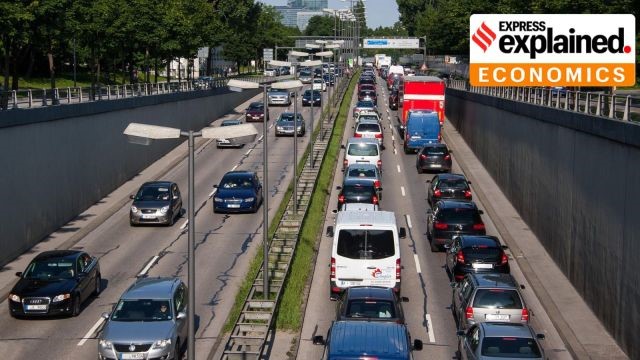Corporate Average Fuel Efficiency (CAFE) 3 Norms

- 03 Oct 2025
In News:
- India has proposed the Corporate Average Fuel Efficiency (CAFE) 3 norms, drafted by the Bureau of Energy Efficiency (BEE), aiming to tighten fuel efficiency standards, reduce vehicular emissions, and promote electric and alternative fuel vehicles.
- First introduced in 2017, CAFE norms regulate fuel consumption and CO? emissions for passenger vehicles weighing up to 3,500 kg, including petrol, diesel, CNG, LPG, hybrid, and electric vehicles.
- The earlier iteration, CAFE 2 (2022-23), capped fuel consumption at 4.78 litres/100 km and CO? emissions at 113 g/km, with penalties for non-compliance.
Need for CAFE 3
Current Indian norms inadvertently favourheavier vehicles like SUVs while imposing stringent targets on smaller cars, unlike international practices in the USA, EU, China, and Japan, where light vehicles enjoy relaxed emission standards. CAFE 3 seeks to align India with global best practices, revive the small car segment, and incentivisegreen mobility, particularly electric vehicles (EVs) and hybrids.
Key Features of CAFE 3 Norms
1. Applicability
- Targets M1 category passenger vehicles (seating up to nine people, maximum weight 3,500 kg).
- Non-compliance will attract penalties under the Energy Conservation Act, 2001.
2. Efficiency Targets
- Efficiency formula: [0.002 × (W – 1170) + c], measured in petrol-equivalent litres/100 km, where W is fleet weight, 1,170 kg is a fixed constant, 0.002 is a multiplier, and ‘c’ decreases yearly from 3.7264 (FY28) to 3.0139 (FY32).
- Lighter vehicles benefit from easier compliance, motivating manufacturers to focus on small cars.
- Additional relaxation: 3.0 g CO?/km (capped at 9 g/km) for compact cars (<909 kg, ≤1200 cc engine, ≤4,000 mm length).
3. Incentives for EVs and Alternative Fuels
- Super credits: Each EV sold counts three times toward fleet compliance; plug-in hybrids 2.5×, strong hybrids 2×, flex-fuel ethanol vehicles 1.5×.
- Carbon Neutrality Factor (CNF): Offers relaxation based on fuel type (e.g., E20–E30 petrol vehicles 8% CNF; strong hybrids 22.3%).
4. Emissions Pooling
- Up to three manufacturers can form a pool, treated as a single entity for compliance.
- Pool managers are legally responsible for penalties, allowing strategic partnerships, cost-sharing, and smoother adherence to targets.
Policy Complementarities
- GST reforms (GST 2.0) reduced taxes on small cars from 28% to 18%, complementing the relaxation measures under CAFE 3.
- By incentivisingEVs, hybrids, and small vehicles, the norms aim to reduce oil import dependency and advance India’s climate commitments under the Paris Agreement.
Challenges
- Industry adaptation: Transitioning fleets to comply with stricter norms while managing costs.
- Consumer acceptance: Affordability and infrastructure readiness for EVs and hybrids.
- Infrastructure readiness: Charging and fuel infrastructure for alternative vehicles needs significant expansion.
Conclusion
CAFE 3 represents a transformative step in India’s vehicular emission regulation, combining fuel efficiency improvements, emission reductions, and green mobility incentives. By aligning with global practices, reviving the small car segment, and encouraging electric and hybrid vehicles, the norms have the potential to accelerate sustainable transportation while addressing environmental and energy security goals. Successful implementation will require coordinated action between manufacturers, policymakers, and consumers to build a cleaner, efficient, and resilient automotive sector in India.
